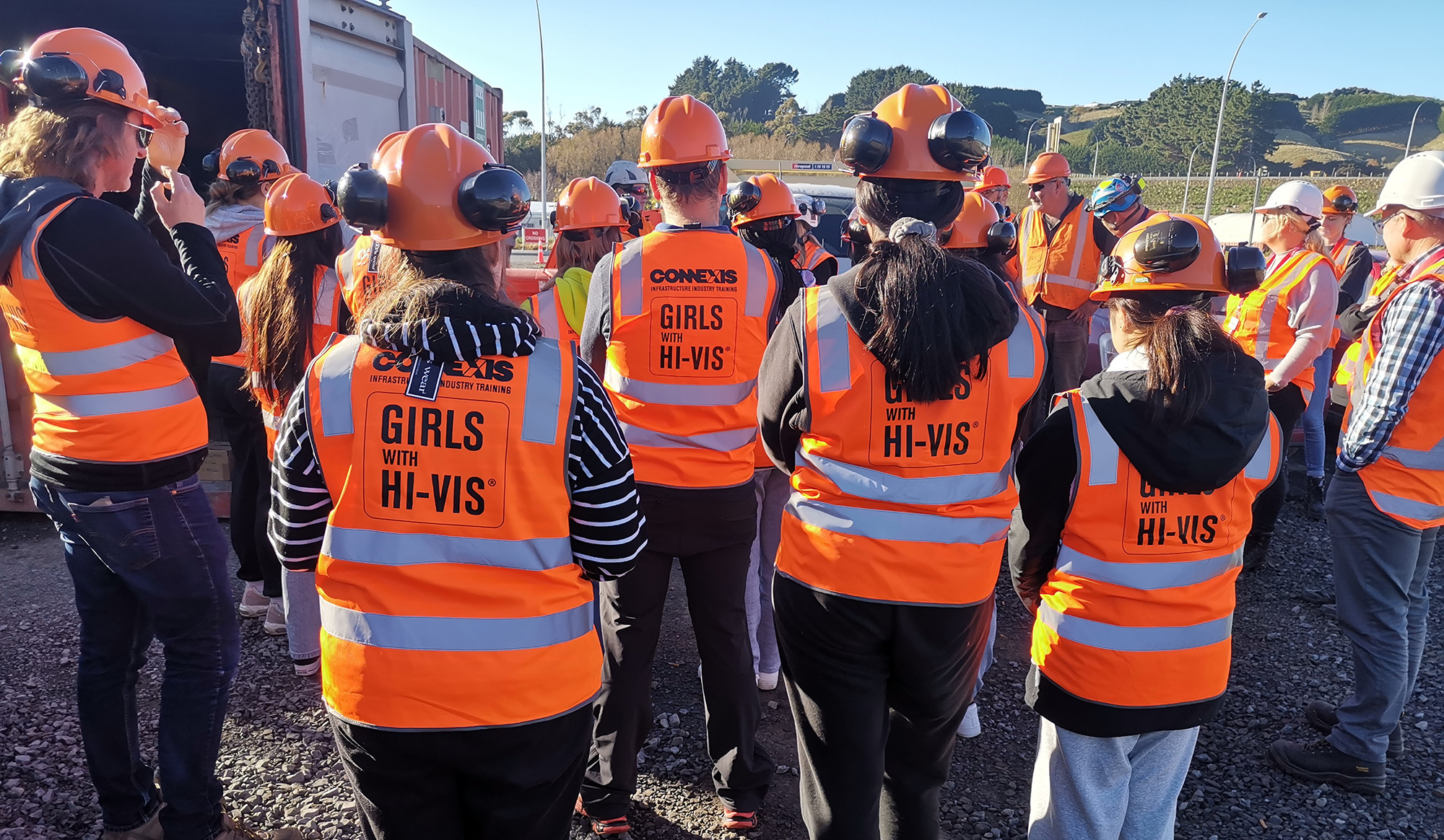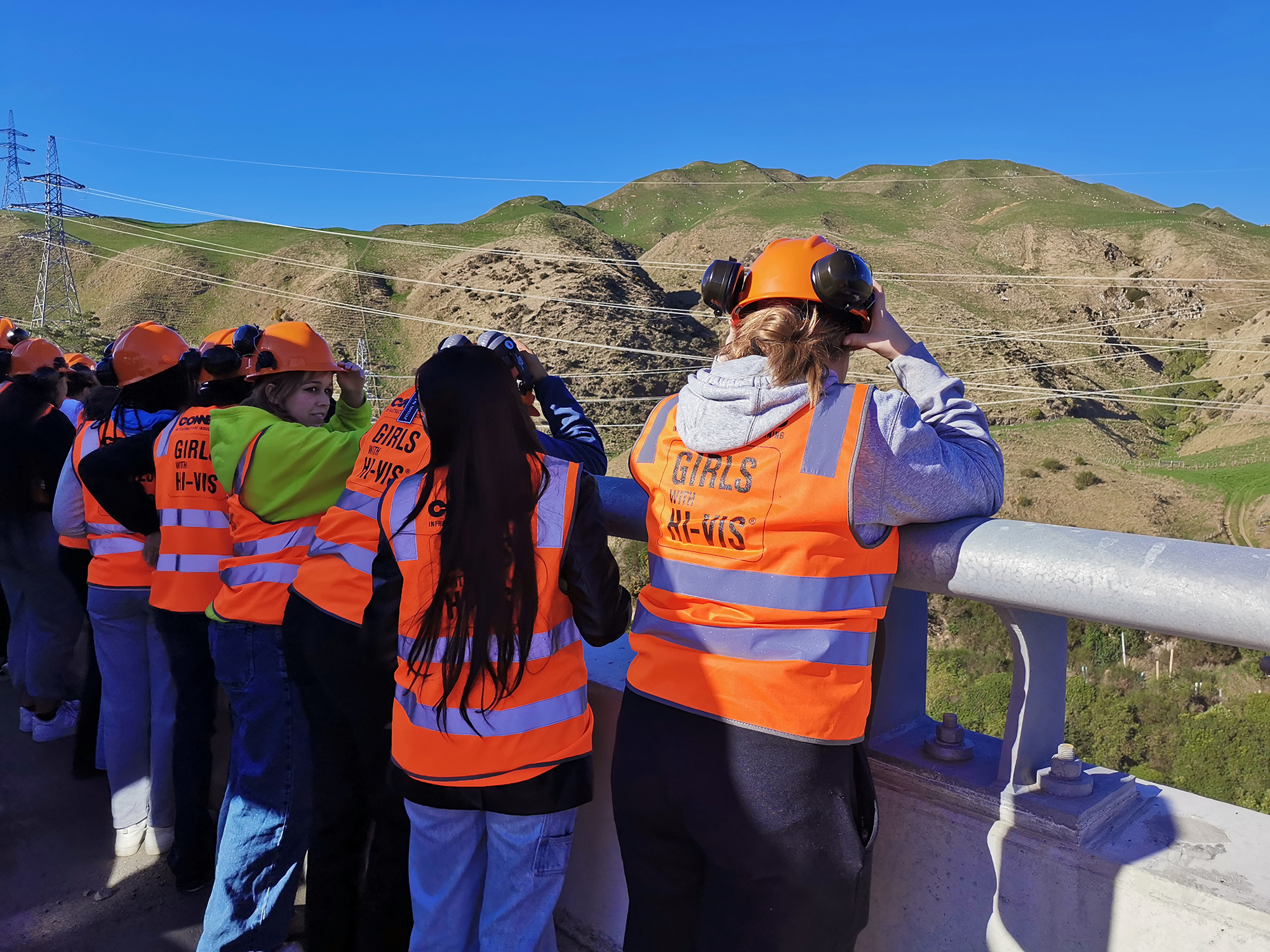Kia ora and welcome to a winter update from the Transmission Gully team.
If you read these newsletters regularly, you’ll know about the progress we’re making, but because the motorway is hidden behind the hills – you may not be clear where the road goes and how you’ll access it. We’ve created an animated video to help:
When Transmission Gully opens it will become part of State Highway 1 (SH1), to reflect its function as the main route in and out of Wellington. The current section of SH1 between Linden and Mackays Crossing will be renumbered State Highway 59 (SH59).
When Transmission Gully opens, SH1 will have a minimum of four lanes (at least two in each direction), with median barriers and no intersections, all the way from the Terrace Tunnel to Peka Peka.
The new motorway seamlessly connects with the Kāpiti Expressway at Mackays Crossing in the north and the Porirua–Johnsonville motorway at Linden in the south.
There are four new interchanges at Paekākāriki, SH58 at Pāuatahanui, Waitangirua and Kenepuru. New link roads are being built for Porirua City Council, connecting Whitby and Waitangirua in eastern Porirua with the motorway.

Transmission Gully travels through a range of stunning landscapes.
If you prefer to look at a map, here’s a good overview of where the Transmission Gully motorway goes.
The animated video is just one of the new features of our revamped website. Learn more about how to navigate the new interchanges and plan your journey.
The new motorway will be on navigation and journey planning maps when it opens. In the meantime, the interactive map on our website has a range of start and end points so you can explore how your journeys may change when Transmission Gully opens. There are also graphics that explain how each interchange will work.
How to drive Transmission Gully
We’ll be continuing to add new information as we approach opening.
As at the end of June, we were 95% through our construction programme. Paving continues to be the big focus as we head towards road opening, with asphalt teams placing 13,000 tonnes of asphalt in June. The paving teams are now applying the final pavement layer (called the wearing course), which is the surface vehicles will drive on.
The side and median barriers are nearly complete, and the majority of the radar system is installed and powered. The radar system is like systems used in the UK and Europe and will detect incidents such as stopped vehicles, vehicles going the wrong way, or animals or debris on the motorway. Transmission Gully is the first motorway in New Zealand to use this technology.
There’s a lot of activity at the Waitangirua Interchange, with construction teams working on the Porirua link road project too – the two link roads are being built for Porirua City Council to connect Whitby and Waitangirua to the new motorway.

The Waitangirua Interchange which links the suburbs of Waitangirua and Whitby with Transmission Gully.
In the northern section of the site, the busiest area as always is Pouāwha, the Wainui Saddle. On any given day, there can be drainage, slope stabilisation, rope access, pavement and barrier teams all working hard to complete works.

Pouāwha, the Wainui Saddle looking north to Kāpiti Island.
Sometimes it can be handy having a large construction project nearby…
When the Transmission Gully project team heard about the stranded baby orca being cared for in the local harbour, it was eager to help in any way.
The crew from our safety and plant/store teams raced down to the Plimmerton Boating Club with a diesel heater (and jerry cans of diesel to run it), fifteen Hi Vis jackets, vests and gloves to help keep volunteers warm.

Hine Sollitt-Mackey and May-Ellen Smith watch as volunteers tend to the baby orca at Plimmerton Boating Club.
TG’s Safety Administrator Tessa White joined the volunteer roster, donning two wetsuits to keep the orca company for a shift overnight.
The Transmission Gully team share the community’s sadness that despite all efforts, the baby orca passed away 12 days after it became separated from its pod.
Science, design, engineering… There’s so much more to roading than pushing dirt around.
That’s what students from Sacred Heart College in Lower Hutt learned on their recent visit to Transmission Gully.

The year 12 and 13 students visited key sites on the motorway to learn about opportunities in the roading industry.
The students visited Transmission Gully as guests of the ‘Girls in Hi Vis’ initiative from Infrastructure Industry Training group, Connexis. Girls in Hi Vis showcases the types of jobs available in the industry to young women.
A decade ago, just 3 per cent of trainees in infrastructure roles were female. By this year, the proportion has increased to 10 per cent. But with the industry facing a major skills gap – the initiative seeks to entice more female students into choosing this career path.
“It motivates you as a girl... like oh cool there are a lot of females in this field.” – Grace Douglas, Year 13.

Students get a health & safety briefing at the Mobile Asphalt plant at Lanes Flat.
At the Mobile Asphalt plant at Lanes Flat, operator Sam Burrow (aged 36) described how she loves that her career has taken her all around the country and the world. She told the visitors that all her training has been paid for as part of her job. Sam has been working in roading since she was 17 – the same age as student Charelize Otto who was listening to her story.
“You could do practical work and learn on the job and I think that’s really cool.” – Charelize Otto.

Learning about the different pathways into the industry are (left to right) Aparna Menon, Grace Douglas, Maria Mosquera Montes and Charelize Otto.
On their bus tour, the girls were hosted by engineer Ellah Black. Ellah studied commerce at University and worked in communications before her employer, Downer Construction, paid for her to do a civil engineering certificate. Ellah says in the nine years she’s been in the industry more and more women have joined her.
Maria Mosquera Montes was impressed with Elllah’s knowledge:
“She’s hands on and knows what she’s talking about. It shows the industry has evolved.” – Maria Mosquera Montes

Engineer Ellah Black says women in the infrastructure industry need to ‘speak up’ and make themselves heard.

At Pouāwha, the Wainui Saddle, the Sacred Heart students learned that the project had removed enough rock and soil between the cuts to fill the Wellington stadium three times over.

At Te Ara a Toa – the girls got to do something motorists will never get to do…peer over the edge. It’s 60 metres high.
Standing on Transmission Gully’s largest structure, Te Ara a Toa (the bridge over Cannons Creek), students were inspired to hear how the road has been built so that even if drivers make mistakes – the chance of serious harm is minimised.
As the students got back on the bus, travelling south to where Transmission Gully will meet the existing State Highway at Linden, they shared that engineering is a definite field of interest to them.
Charelize Otto said the tour had helped her understand how the science and maths she was studying could be put into a practical career.
“It excites me knowing there are women out there doing it… and that we can do that too.” – Charelize
It’s not the only rainbow to grace the skies above Transmission Gully... but it’s certainly the only permanent one.

A rainbow on the hillside come rain or shine.
The attention-grabbing rainbow bridge sits in pride of place at The Morgans 9-hole golf course, which borders the new motorway near Battle Hill Farm Forest Park.
The bridge is the first piece of art to feature in what will become a sculpture park at the golf course.
Golf course owner Gareth Morgan also intends to build a cycle path along the edge of his property so cyclists can zig zag up the hill and over the rainbow bridge.
But getting it up on the hill took six months of planning.
At 16 metres long and weighing almost 6 tonnes, the only way to get the bridge to the golf course was via Transmission Gully.

The rainbow bridge being transported along Transmission Gully.
It was transported on the back of a long loader and lifted into place with a crane. With a whopping 40 metre reach between the crane and the bridge’s final resting place, the crane needed 82 tonnes of counter-weight on board. It took another three transporters to bring the counter-weights in.

Preparing for lift off.
Pre rainbow makeover, the bridge served Upper Hutt as a railway bridge connecting punters with the Trentham racecourse.
After the first race meeting in 1906, the racecourse committee realised they needed a pedestrian bridge so the public didn’t risk walking across the railway line.
The bow string design was built out of rail irons dating back to the 1870s.
It’s new owner, Gareth Morgan, says it’s an historical piece of infrastructure and worth celebrating;
“I believe the arches are made out of the first railway that was built from Wellington to the Hutt Valley. You can see the dates when you walk across the bridge.” – Gareth Morgan
The bridge was in place at Trentham from 1907 until 2014, when it was taken down for strengthening work. Unfortunately, it was dropped at the workshop and deemed unfit to be reinstated across the rail line. It sat in a workshop gathering dust until Gareth heard about it.
He was determined to fix it up and move it to the golf course.
“We decided to make a statement with it. All bridges are grey so we thought – why not rainbow?”
Of course, the bright paintwork ensures it will also be very eye catching for motorists driving past on Transmission Gully.
“The way I look at it, Transmission Gully – a pretty amazing engineering feat – is the Yellow Brick Road into wonderful Wellington so it’s only appropriate to have a rainbow bridge en route,” says Gareth.
We continue to remind all members of the public to stay safe and not enter the project site at any time. Work is underway in multiple areas and it remains a high hazard area.
If you have any questions, please contact us at info@tg.co.nz. If you have an urgent matter, please call the 24-hour project hotline on 0800 TGINFO. If we are working outside of our normal work hours and you’re one of our neighbours, we’ll be in touch with you directly as usual.
In our next newsletter, we’ll have more on how the interchanges will work and share videos of two preview drives we gave to a local truck driver and a motorist.
But for now, Haere ra from the Transmission Gully team.

Jessie Foster and Fruen Samoa bringing jackets and a heater to warm volunteers who were looking after the baby orca, Toa.